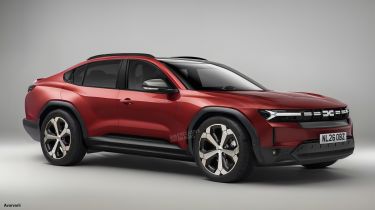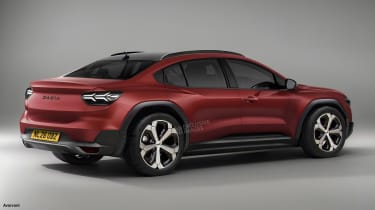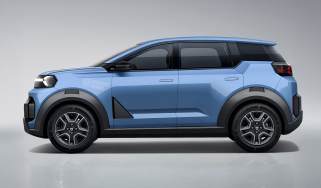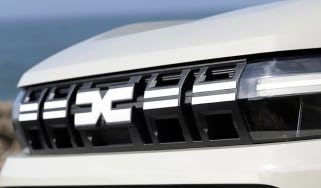New Dacia C-Neo hatchback has the Volkswagen Golf in its crosshairs
The Dacia C-Neo is set to trump many hatchback rivals when it comes to space, and our exclusive images preview how it could look

Dacia is preparing a pair of SUVs – first the all-new Duster, due on sale this summer, then the larger, Nissan Qashqai-rivalling Bigster that will land in 2025. But the value brand is also considering two other family-sized models that could arrive in the second half of the decade, including a regular hatchback that would potentially see Dacia target the Skoda Octavia and Volkswagen Golf.
Known internally as the Dacia C-Neo, the core vehicle would be positioned alongside, or even slightly above, the seven-seat Jogger, which is actually Europe’s best-selling C-segment (Golf-class) vehicle on retail numbers (excluding fleet sales) alone. It would forego scope for a third row of seats, but feature an Octavia-style ‘notchback’ design, with a semi-saloon profile masking hatchback practicality that trumps that of more compact models, such as the Golf and Vauxhall Astra, on outright load capacity.
Indeed, Dacia believes it can steal sales from these cars on space, price and value – not least because many of them will have switched to more expensive hybrid or EV powertrains by the time C-Neo arrives. We expect Dacia to continue with petrol power.
Our exclusive images show how a C-Neo hatchback could look in production form, taking Dacia’s latest design language, including cues from the Bigster concept, and applying it to a ‘low drive’ profile – Dacia-management phraseology for a non-SUV bodystyle. It’s conceivable that C-Neo could then spawn an estate variant, giving Dacia its second new C-segment model.
Speaking exclusively to Auto Express, Dacia Chief Executive Officer Denis Le Vot said that the company is sticking to its plan – announced at Renault Group’s capital markets day in November 2022 – to add cars beyond the Bigster. “What we’re doing right now is going around all of the ideas because we intend to launch one, maybe two more models that will be C-segment in size,” he said. “They would be based on the same platform – CMF-B, period!”

That choice of architecture is only to be expected, because Dacia has already announced that its plans for the rest of this decade are intrinsically linked to CMF-B – the same platform that also underpins the Renault Clio and Captur, along with the Nissan Juke. Building larger models on the chassis allows Dacia to tap into Renault Group economies of scale, particularly since its focus remains on efficient combustion-engined models instead of a switch to EVs.
“We have a lot of technical possibilities to offer for new shapes of body,” Le Vot told us. “That’s the capacity within the platform; with new Duster we’re going to sell it with a hybrid, and we’ll also be able to sell models as mild hybrids.”
The reliance on CMF-B makes it relatively easy to predict the technical make-up of a new Dacia family car. In base form it would feature a 1.0-litre three-cylinder turbo petrol engine producing 109bhp, but it would also be offered with a 1.2-litre petrol developing 128bhp and boosted by 48-volt mild-hybrid assistance. Further to this, it’d probably get the same 1.6-litre full-hybrid set-up as the Jogger and forthcoming Duster.
When asked if a decision has been made on the project, Le Vot said, “We are deciding – with the emphasis on ‘ing’. We’re talking about 2026 onwards, after all.”
Dacia’s senior vice-president for sales, operations and marketing, Xavier Martinet, said the brand is studying how many additional gains it can make by launching further models in the family-car segment. “We’re looking into possibilities,” he said. “Jogger is already strong; when you look at Bigster, you’d say that this will give us another good contender in the class. But are they enough? This is the decision we are exploring. We know we’re not going to get another big gain with an extra C-segment model, so we look at the numbers and see if they add up. If they don’t, we don’t go there; sometimes it’s heartbreaking for us, but that’s what we do.”
Martinet said, meanwhile, that although the Bigster will have typical Dacia traits – size, space, usability and value – it will be positioned apart from the Duster, with a different target audience (and probably at Dacia’s highest price point to date). “If Bigster is thought of as a large Duster, it’s a fail,” he told us. “There will be some similarities, but I have spent the past year making sure they are two distinct models.”
Click here for our list of the best hatchbacks...
Find a car with the experts








